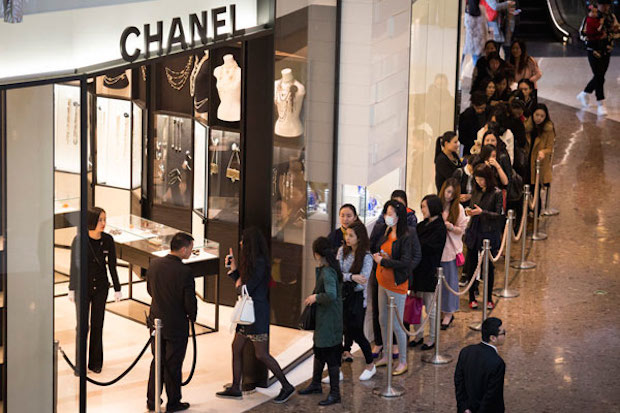Interpersonal influences and luxury consumption
In one of my earlier research papers1, I found that due to the highly social nature of luxury consumption, consumers try to gain social advantage following a desired group’s consumption pattern. Moreover, in my earlier posts relating to interpersonal influences, I have suggested the need for researchers to understand the importance of group effects on luxury consumption. To address this, we embarked on a journey focusing on three specific questions:
(a) Do consumers consume luxury goods with a tendency to conform to others expectations (normative interpersonal influences)?
(b) Are consumers accepting others view as reality when it comes to luxury consumption (informational interpersonal influences)? And
(c) Is this behaviour observed in developed and emerging markets consistently or there are differences between consumers in their susceptibility to interpersonal influences?
Using a sample of British and Indian luxury consumers we answered the questions above. The initial study results revealed that interpersonal influences were significantly influential in both developed and emerging markets. However, as we looked deeper, interesting similarities and differences between consumers emerged.
Significant impact of normative interpersonal influences was observed on luxury purchase intentions across both countries. It also demonstrates that consumers across markets use luxury consumption to build a superior image in the eyes of significant others. This can be attributed to the emergence of global lifestyles in the luxury industry, in which manufacturers and retailers are beginning to standardize their messages across the world. In turn, this creates similarities in terms of consumers’ reference point to consumption. While the impact of normative interpersonal influences on luxury purchase intentions was found to be significant across the countries, through mean difference analysis it was observed that Indian consumers were more susceptible to normative interpersonal influences than British consumers. This reflects the influence of collectivist psyche on consumer purchase intentions. Indian consumers being collectivist in nature increasingly look for fitting-in behaviour and therefore their consumption will be highly dependent on social cues and societal acceptance.
Similarly, Indian consumers were found to be more susceptible to informational interpersonal influences than British consumers. However, a surprising element of this finding was the non-significant relationship in terms of the impact of informational interpersonal influences and luxury purchase intentions among British consumers. The finding suggests that when consuming luxury products, consumers in developed markets, like the UK, do not rely on or accept information from others as evidence of reality. This could be due to three main reasons: increasing individualism due to rising individual and national wealth, easy availability of credit, and access to other objective information sources. In the past three decades, developed countries including the US and the UK have experienced a phenomenal rise in national wealth. Prof. Geert Hofstede associates the increase in individualism with an increase in national wealth. Such an increase can lead to higher levels of individualism among consumers and, in turn, affect how consumers in these markets accumulate informational cues. In addition to increased individualism, consumers are exposed to easy credit availability (i.e., through various financial instruments including loans, credit cards, debit cards and so on) which has created a unique consumption oriented culture. Moreover, numerous technological tools (i.e., dedicated Web sites, blogs, reviews, and other informational tools) help consumers gather information related to luxury products and brands. Many of the dedicated websites and blogs are run by the known experts in the luxury industry. These avenues of relevant objective information help consumers rely less on informational interpersonal influences, which can be highly subjective in nature.
Considering these differences in the two market and cultural contexts, managers associated with luxury products and brands should consider the overall significant impact of interpersonal influences in their strategies carefully.
The findings suggest that the impact of normative interpersonal influences is significant across markets. This result has important managerial implications in terms of strategic campaign building. It offers an opportunity to standardize the campaign across both individualist markets and collectivist markets. Thus, when planning their promotional activities and budgets, luxury marketers working with large luxury corporations or specialist niche players need not vary the proportion of interpersonal and impersonal communication activities and budgets across the two groups.
While normative interpersonal influences provide an opportunity to standardize, the findings pertaining to informational interpersonal influences suggest the need for adaptation. Consumers in collectivist markets rely heavily on informational interpersonal influences, and therefore managers should provide further avenues for consumers to engage in sharing information with others. The power of social networking, which has become a new channel for word of mouth in many developing markets, can be exploited in this case to build a stronger informational interpersonal influence. Conversely, consumers in individualist markets refrain from associating themselves with informational interpersonal influences. Therefore, managers would do better to build campaigns that have little reference to informational interpersonal influences in these markets.
Source:
Shukla, Paurav (2011), “Impact of interpersonal influences, brand origin and brand image on luxury purchase intentions: Measuring interfunctional interactions and a cross-national comparison,” Journal of World Business, 46 (2), Forthcoming.
Footnote:
1. Shukla, Paurav (2010), “Status Consumption in Cross-national Context: Socio-psychological, Brand and Situational Antecedents,” International Marketing Review, 27 (1), 108-29.







